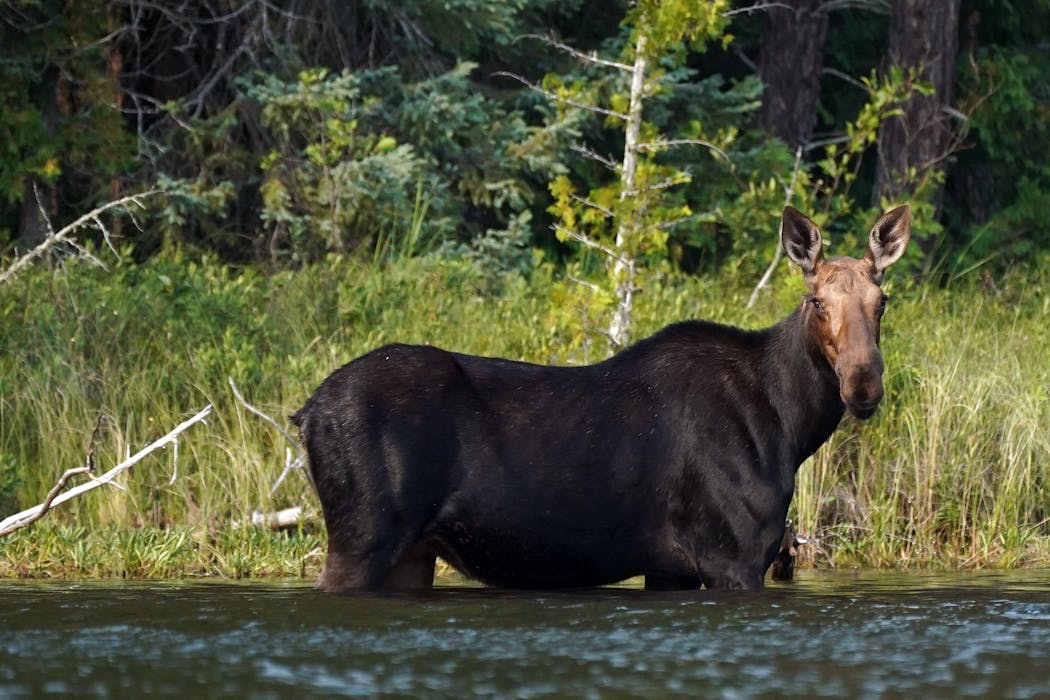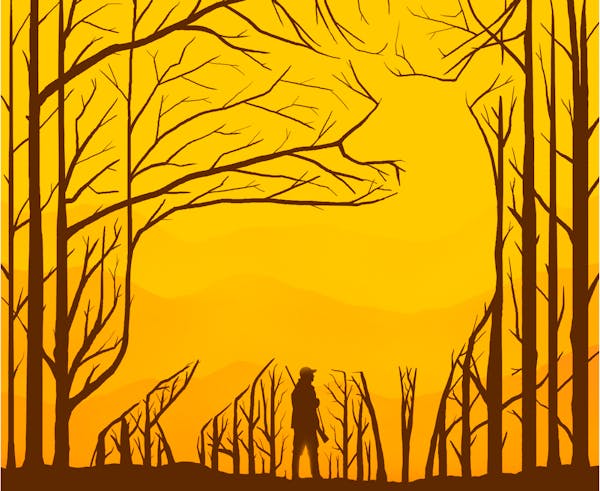A serious proposal under consideration by the Department of Natural Resources would reintroduce wild elk to Minnesota's Arrowhead region, west of Duluth.
If the plan offered this summer by the Fond du Lac Band of Lake Superior Chippewa wins approval, it'll be on the strength of favorable public opinion surveys, new hunting possibilities, limited human-elk conflicts, plentiful public land and the anticipated long-term resilience of elk to climate change.
The looming threat of continued warming and modified landscapes is playing into all kinds of forest wildlife scenarios in Minnesota. From the potential disappearance of moose and lynx to the possible elimination of 10-year population cycles for ruffed grouse, researchers and climatologists foresee the northeastern boreal forest receding or going away, possibly as early as 2070.
For hunters, climate change will alter some of the seasons and places where they stalk their prey. Deer season could get pushed deeper into the fall, with greater whitetail abundance in the far north. Trappers could lose two of their most coveted furbearers: martens and fishers. Bears could spend less time in dens if more food is available over winter. Bobcats will expand northward.
"It's a complex picture,'' said Lee Frelich, director of the University of Minnesota Center for Forest Ecology.
At a series of hearings before the Legislature in 2019, Frelich testified that 90% of Minnesota's landscape won't support forest 50 years from now if greenhouse gas emissions continue as usual. Aggressive capping of CO2 emissions could keep the state largely recognizable, he said, but wildlife managers and foresters already are collaborating on ways to preserve iconic forest compositions of pine, aspen and birch for as long as possible in the northeast.
According to Frelich's research, they'll be buying time against a midcentury climate change when evaporation will begin to exceed rainfall on a large scale. That's when forests will give way to prairie landscapes, he said. The eventual outcome in that "business as usual'' emissions scenario would leave only patches of woods along rivers and on the north sides of hills, he said.
The National Weather Service recently offered a reminder of the warming trend by announcing that the average low temperature in Minnesota this summer was 65.7 degrees — easily the highest on record.
Wildlife biologist Mike Schrage of the Fond du Lac Band is at the forefront of the plan to translocate wild elk from the northwestern corner of Minnesota to reservation land and the adjoining Fond du Lac State Forest. His pitch to the DNR describes the animals as a versatile species expected to flourish under a variety of climate change scenarios.
"Managed translocations of species better adapted to future conditions is one strategy wildlife managers can adopt to mitigate the impacts of climate change,'' Schrage wrote.
DNR Wildlife Health Group Leader Michelle Carstensen said the rationale makes sense, especially because Minnesota's troubled moose population is showing clear signs of thermal stress. They're having to idle themselves more often in wetlands to get out of the summer heat, she said. When that happens, the animals forgo feeding opportunities needed to prepare for winter.
Meanwhile, moose are fending off parasites, including a brain worm carried into their territories by highly adaptable, encroaching deer. Carstensen said DNR is now collaborating with the U.S. Forest Service, Chippewa tribes, Voyageurs National Park and the Midwest Climate Adaptation Science Center on how to maintain large habitat complexes for moose.
"We are looking for where on the landscape is the greatest potential for cross-ownership moose habitat management … with climate change in mind and ways to keep deer away,'' said Deahn Donner, research landscape ecologist for the U.S. Forest Service.
Shorter winters with less snow and more rain will create winners and losers in the realm of forest wildlife, said Ron Moen, professor of mammalogy and ecology at the University of Minnesota Duluth. He predicts Minnesota will lose at least 20% of its mammal species over time because of climate change. That includes moose, lynx, snowshoe hares, martens, fishers and various rodents.
Species that should increase their range based on climate include opossum, coyote, raccoon, gray fox, woodchuck, squirrels and the meadow vole, Moen said. The coyote assumption is based on the chance that the wolf range would probably decrease in the state, though timberwolves don't require cold, snowy winters.
Spruce grouse, now hunted in Minnesota's boreal forest, would disappear along with the conifers they require, experts say. But the outlook for ruffed grouse is less certain. They can persist in deciduous forests, but there would be fewer places to hunt them as prairies expand, Frelich said.
DNR Grouse Project Leader Charlotte Roy said there's also research from the University of Wisconsin that suggests a phasing out of the roughly 10-year swing cycle in ruffed grouse populations. With less variability in the northern climate, the ups and downs in grouse numbers are expected to flatten out into shorter cycles. In the south, grouse populations don't cycle at all, the study noted.
As change happens in northern Minnesota — home to some of the best ruffed grouse hunting in the country — the birds also are likely to lose the deep, dry snow they use for winter burrowing to save energy and escape predation, said Ted Dick, DNR's forest wildlife habitat consultant. Also, an increase in cold, wet springs would hurt their nesting success in the near term, he said.
The routines of Minnesota's black bears also could be disrupted. DNR wildlife researcher Andy Tri, the acting bear project leader, said the animals could be out of their dens longer if food is available over winter. If early thaws become more prevalent, he said, it's possible that more bears will be flooded out of their dens in the spring. If so, they might start using brush piles and other above-ground material for dens.
"All in all, black bears will probably end up winners in the climate change scenarios just because they are so adaptable,'' Tri said.
Police clear out a migrant camp in central Paris. Activists say it's a pre-Olympics sweep
Legendary rugby league star Wally Lewis appeals for concussion and CTE awareness support
LeBron James rants at NBA's replay center for calls, Lakers lose on buzzer-beater, trail Denver 2-0
Hyman gets 1st playoff hat trick, McDavid has 5 assists as Oilers beat Kings 7-4 in Game 1



